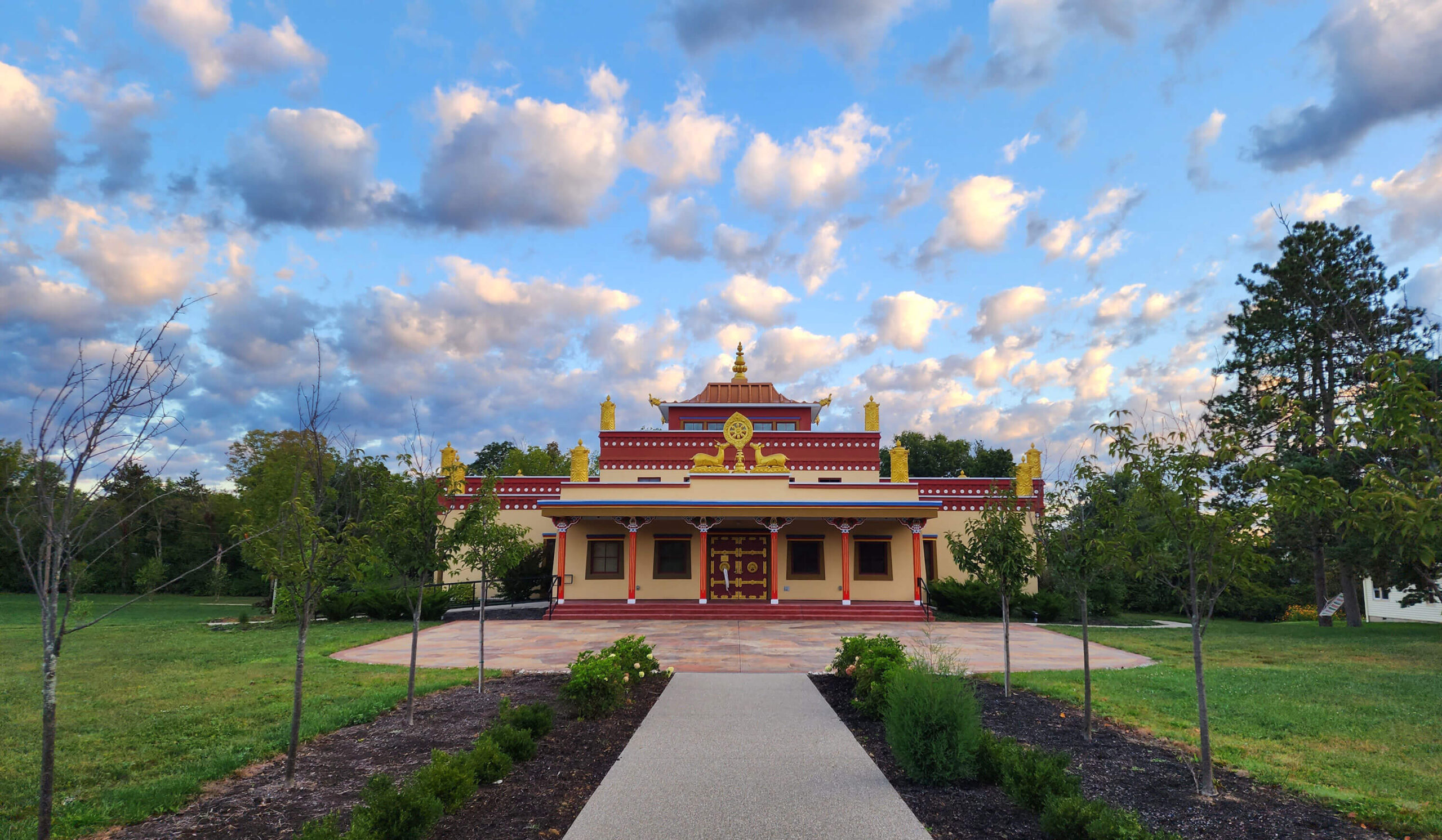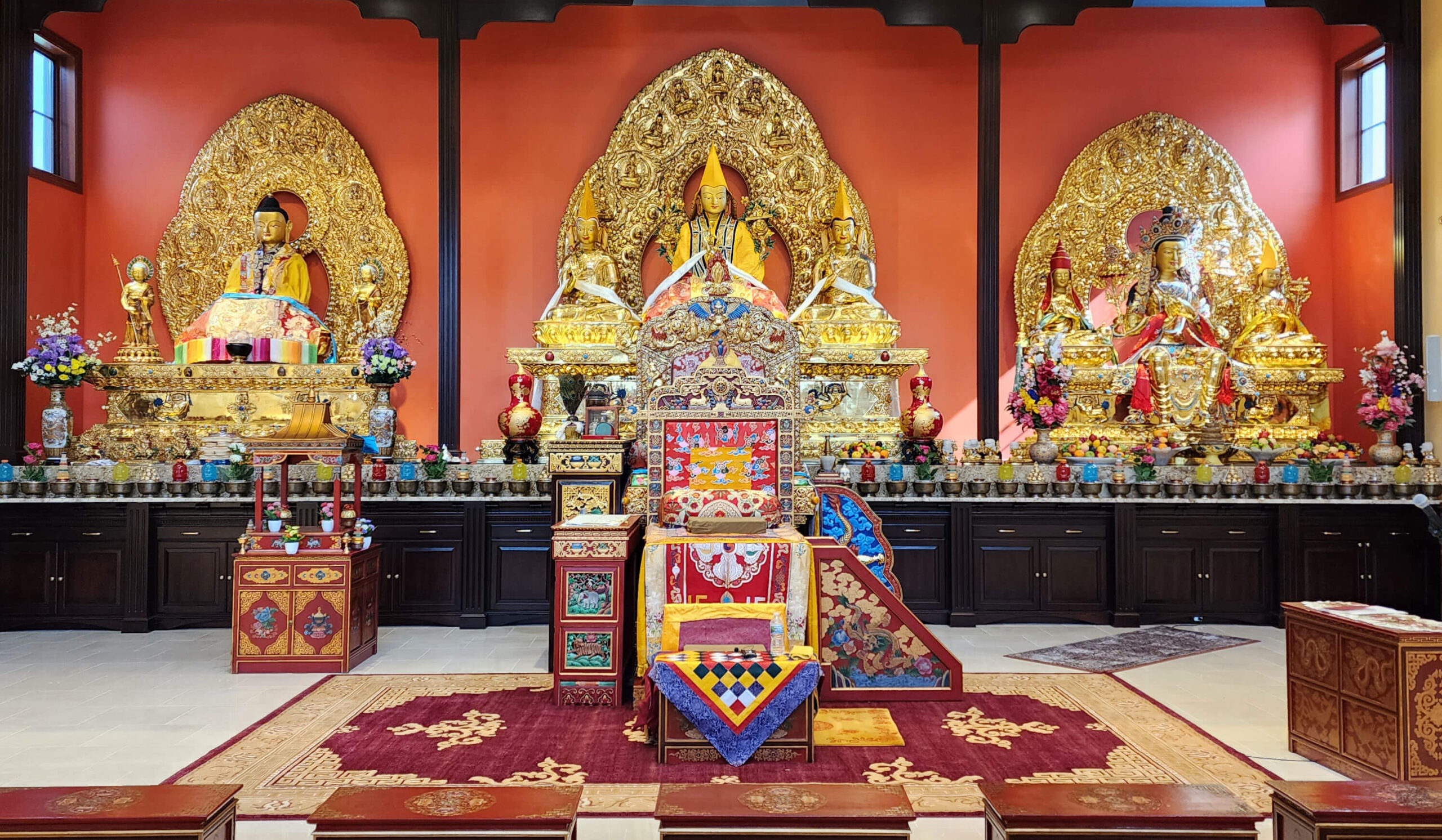Here are some elements of respect and etiquette when receiving teachings from a Lama (Teacher) or entering a monastery in the Buddhist tradition.
Before entering
Leave all shoes in the area near the door or outside the shrine or teaching area; never enter the shrine or teaching area with shoes on.
Teacher’s entrance
Stand and bow slightly when the teacher enters the room. Remain standing while teacher prostrates to the Buddhas and takes seat.
Prostrations
After the teacher (Lama) is seated, practicing Buddhists will perform three formal prostrations as a sign of respect to the Lama and teachings. Others may join in or stand quietly. For those wishing to participate, the form is: with palms together touch crown of head, forehead, throat and heart; kneel on hands and knees, touching forehead to ground very briefly and rising quickly. Perform the entire act three times altogether. At the conclusion, once more touch hands to crown, forehead, throat and heart, pausing briefly at the end for contemplation; then take your seat. If you don’t feel comfortable you are not required to do it. It has come out of proper intention.
Opening prayers and chants
These are to make a break from ordinary activities and engender in ourselves good motivation to receive the teaching. Prayers will be recited from the books and sheets available throughout the room. Please share if there aren’t enough. Students and visitors may join aloud, or contemplate silently.
Other than the usual respectful behavior, such as sitting quietly and alertly during the teaching, there are some points of etiquette specific to Eastern traditions and Buddhism:
- Avoid stretching your legs toward the Lama or altar, as pointing the soles of one’s feet is considered disrespectful.
- Do not place spiritual texts or Dharma materials and mala on the floor or rug (ok on a folder, pack, pillow, handbag, etc., which is on the floor).
- If you must enter the shrine room and meditation or teaching has begun, do so as quickly and as quietly as possible, so as not to disturb others.
Dedication
The teaching ends with prayers that dedicate, to dedicate all the merit you have created through the listening, contemplation, mediation and practice to the alleviate sufferings of all beings and attaining enlightenment for sake of all beings. You make add other personal dedication too.
Teacher’s exit
As the Teacher stands to leave, stand and bow slightly until teacher is out of the room. Students will again perform three prostrations, except at the last teaching session, where the omission conveys our wish for the Teacher to return.



